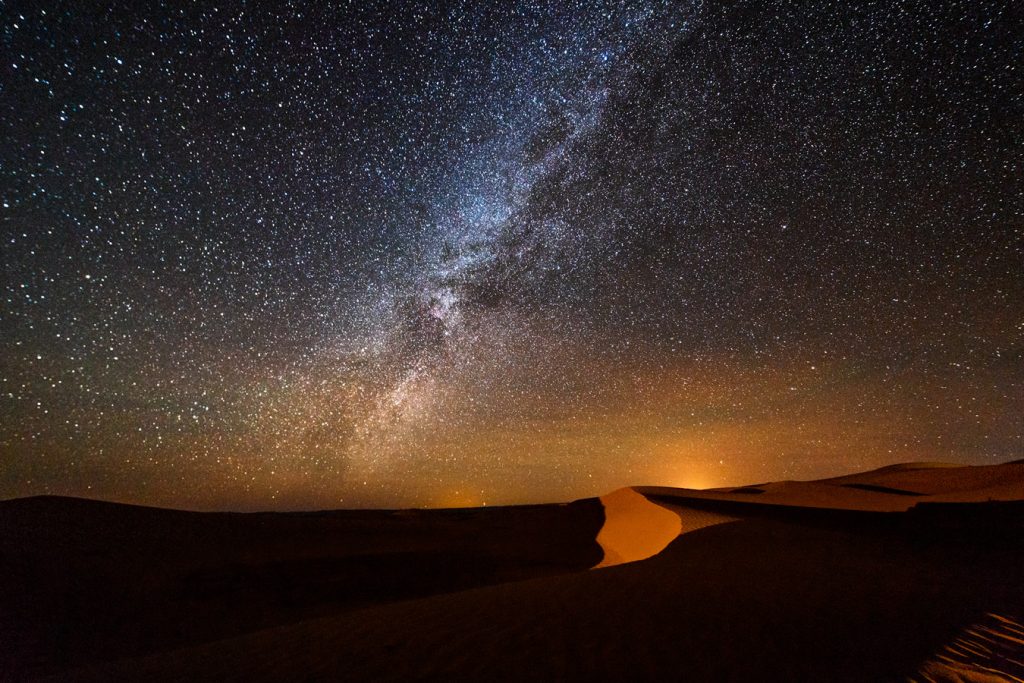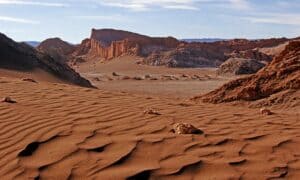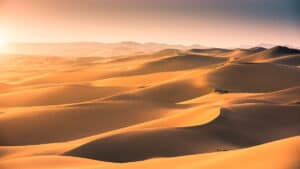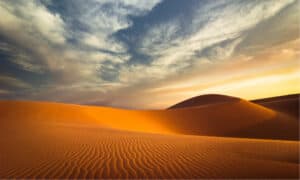The Sahara Desert is a place of extremes in many ways. The largest desert in the world, the Sahara stretches an incredible 3,600,000 square miles. It encompasses nearly all of northern Africa! Scientists estimate it’s been an arid desert for over seven million years. The animals that live there display unique and drastic adaptations. The elevation ranges from over 11,200 feet at Mount Koussi to 436 feet below sea level in the Qattara Depression. The weather also contributes to its extremes — drought for months into sudden and severe storms, stiff winds moving the dunes, and both intense heat and cold. Well-known for its blistering heat during the day, the Sahara also experiences lows of just 24 degrees Fahrenheit at night.
This dramatic shift in temperatures often surprises people. Deserts are supposed to be hot, not cold! However, experts define deserts by their lack of precipitation rather than temperature. Still, a difference of nearly 80 degrees from day to night is quite a feat. Let’s dive into why the Sahara Desert gets so cold at night.
A Triple Threat

A desert is a barren area of landscape where little precipitation occurs.
©Vova Shevchuk/Shutterstock.com
The same factors that super-heat the Sahara are the same ones that result in below-freezing temperatures at night. The combination of sun, sand, and lack of humidity create the desert’s drastic temperatures.
First, the Sun
The Sahara sits just north of the equator, meaning the sun shines its hardest right above the desert. Close to twelve hours of continuous sunlight from an extra-strong sun beat on the Sahara. The sparse vegetation and lack of cloud cover also means very little shade to beat the heat. It’s no wonder the desert gets as hot as it does!
Next, the Sand
A 2008 report by NASA found that sand makes a great conductor of heat. In deserts like the Sahara, the top layer of sand absorbs the heat of the daytime sun while reflecting that heat back into the air. In a sense, the air of the Sahara gets heated from all sides during the day, with the sun shining from above and the sand radiating heat from the ground.
However, sand doesn’t hold onto heat well at all. The sand retains nothing after it bounces the heat back into the air. Once the sun sets, nothing remains to warm the sand. The heat of the day then quickly dissipates, resulting in frigid nights.
Last, No Moisture
As we mentioned before, deserts are classified by a lack of precipitation and, therefore, have next to zero moisture in the air. The absence of water molecules in the air also contributes to the cold desert nights.
Unlike sand, water is much more capable of retaining heat. That’s why more tropical areas near water don’t get as cold. With water in the air, the Sahara Desert wouldn’t get nearly as cold because some of the day’s heat would remain trapped. It also wouldn’t get as hot since high-humidity air requires more energy to heat up. However, the Sahara both heats up and cools down quickly because of a lack of moisture in its air.
Summary

Compared to the day, night in the Sahara Desert unveils a whole new world.
Thanks to a trifecta of compounding factors, the Sahara Desert spans a wide range of temperatures, all in a day. A lack of humidity, the strength of the sun, and the heat-reflective properties of sand all combine to create a huge fluctuation in temperature. So, if you plan to visit this marvel of nature or any of the amazing countries it touches, remember to bring sunscreen and water for the day and a warm blanket for the night!
The photo featured at the top of this post is © Sergey Pesterev / CC BY-SA 4.0 – License / Original
Thank you for reading! Have some feedback for us? Contact the AZ Animals editorial team.







